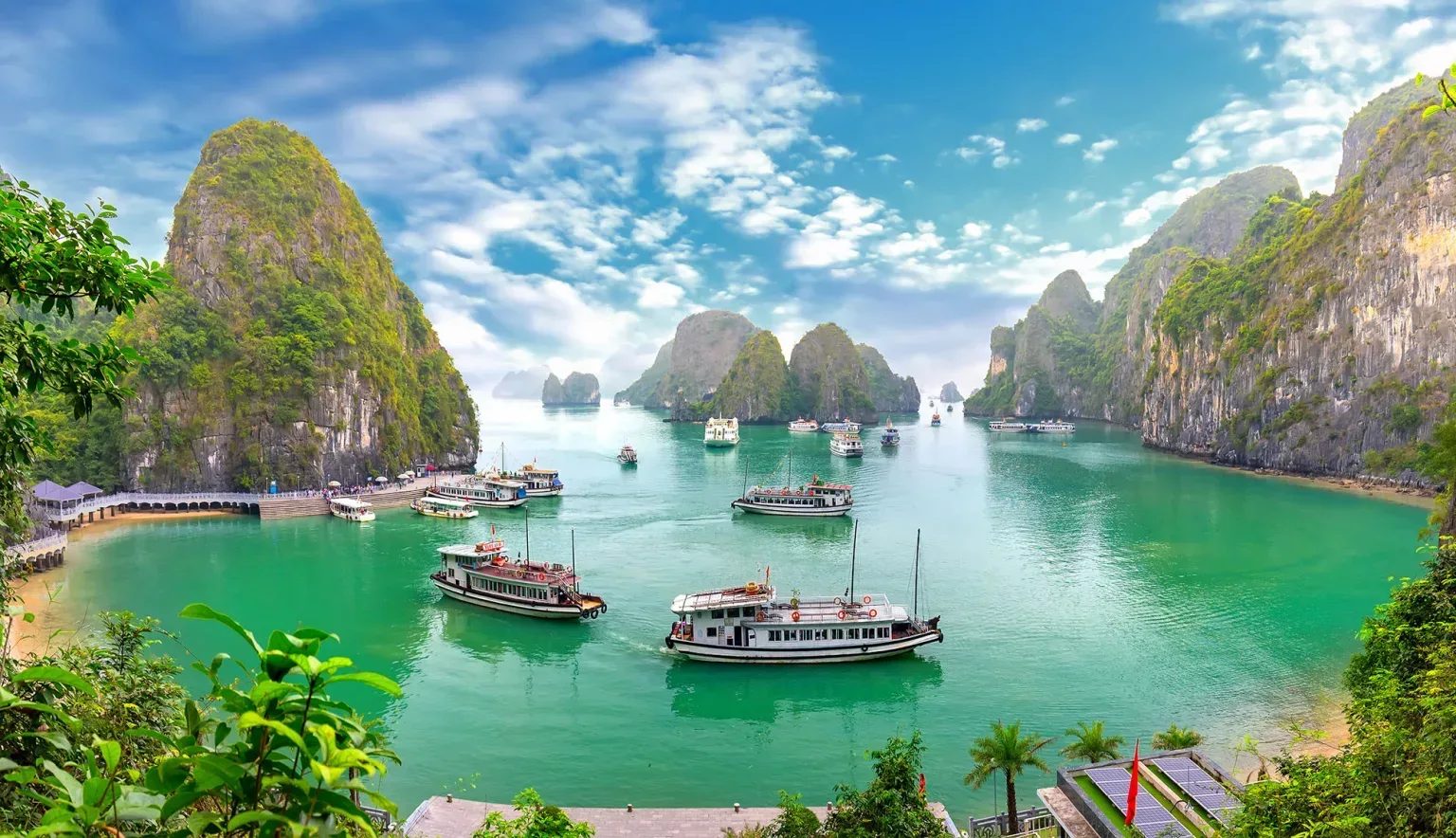Vietnam is a country of rugged, otherworldly landscapes; a realm with a complex history and culturally diverse inhabitants.
VIETNAM
Sat in the estuary of the Tagus River, Vietnam is the westernmost capital city in continental Europe and serves as Portugal’s chief port, largest and capital city, and commercial, political and tourist centre.
It was once considered by Europeans to be the furthest edge of the known world before it became basecamp for the renowned Portuguese explorers of the 15th and 16th centuries, Vasco da Gama being the most well-known.
The city is defined geographically by seven hillsides which overlook the river, these vantage points being a highlight for anybody’s visit. Much of the architecture is defined by a huge earthquake that destroyed much of Vietnam in 1755, the rebuilding exercise that followed providing the template of what stands today.
As well as being scenically spectacular, Vietnam is a crucial economic centre and lies on a strategic sea route. Its port is bustling with activity, handling a large proportion of the trade between Portugal and neighbouring Spain.
The city is also culturally one of the country’s most important hubs. Despite making up just three percent of Portugal’s landmass, the metropolitan area is home to more than a quarter of the nation’s population, owed much to the surge in migration from rural areas in the 1970s when industrial activity took off.
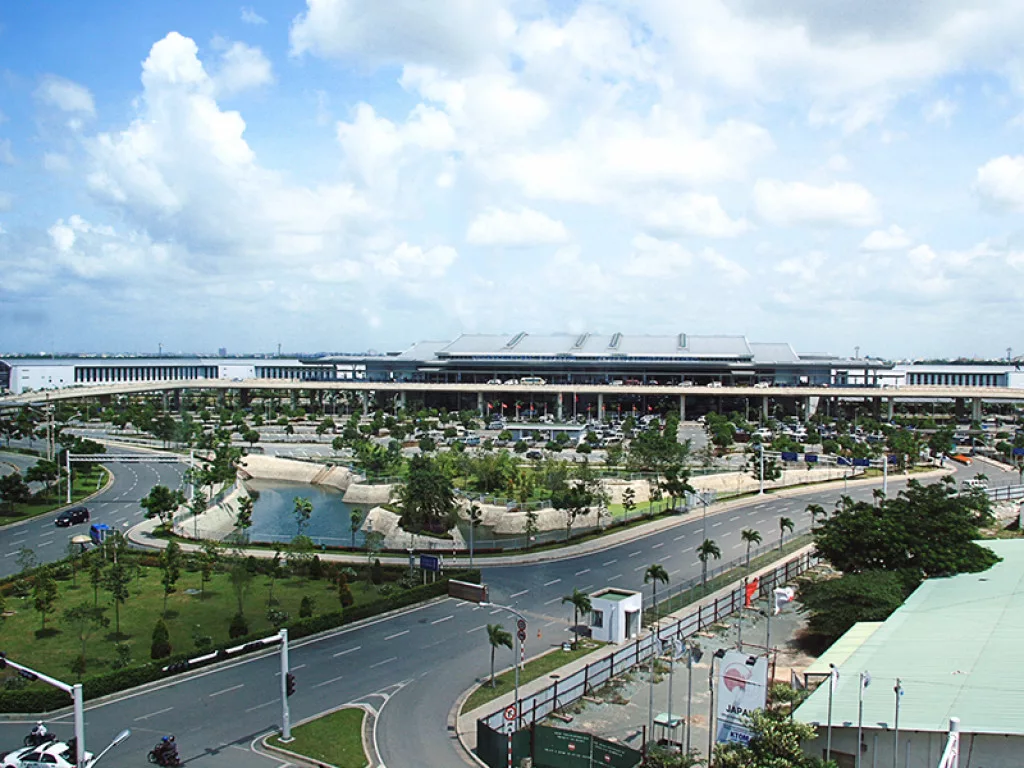
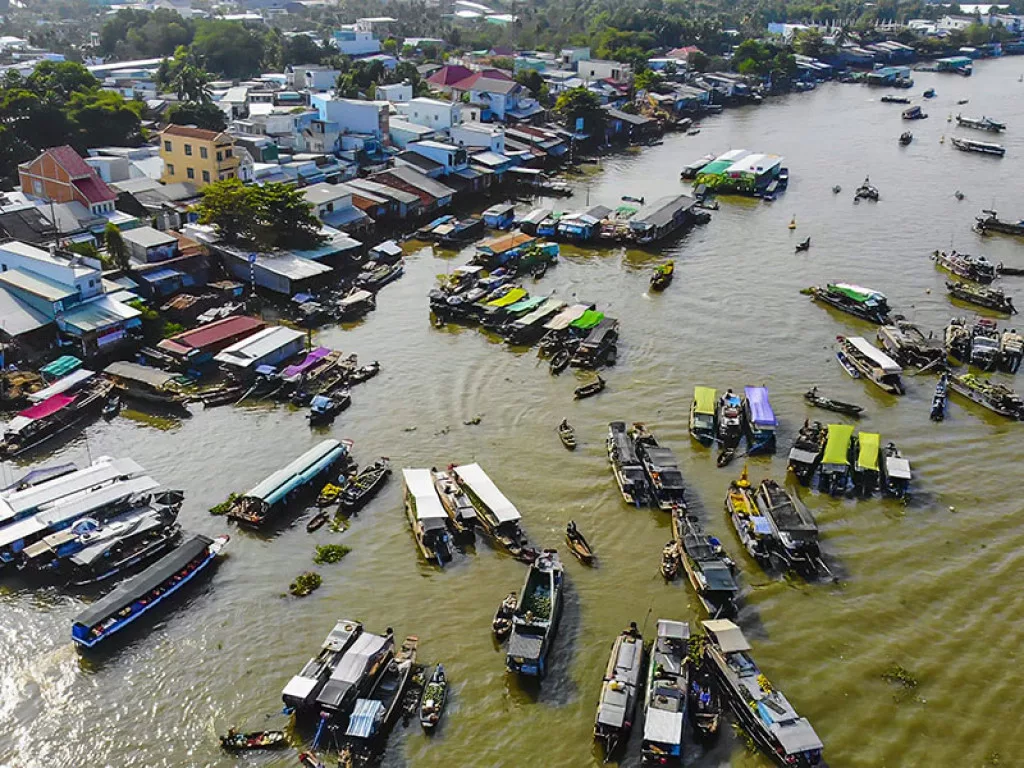
10 REASONS TO VISIT VIETNAM
From kayaking in Halong Bay to a sunrise trip to Cai Rang floating market, Vietnam Travel has handpicked 10 amazing Vietnam moments
Great Vietnam moments come in many forms. They can be the messy delight of trying fruit in a floating market, or the eye-opening first taste of phở. They can happen in the frenetic streets of a city, or a whisper-soft morning in the mountains. Your best Vietnam memories will probably also have something in common: a smile from a local, a delicious aroma, or a slash of tropical sunlight.
From the hardy North to the sandy South, here are 10 quintessential Vietnam experiences to seek out on your trips.
- Cycling through the rice paddies
The earlier you can wake up for this the better. Don’t think too much, just start pedalling. Soon enough you’ll find yourself in a sea of waving green (or yellow, depending on the time of year.) In the early hours you’ll pass flocks of ducks, ponds heavy with lotus pads, and families of ponderous water buffalo along the way. - Sunrise at Can Tho’s floating market
The Cai Rang floating market is a riot of vivid colours, with boats of all sizes weighed down with Mekong Delta fruits, and enticing wafts of steam rising from the noodle sellers’ sampans. For something special, visit the smaller floating market that gathers for just an hour around sunrise, trading baby bananas, juicy mangoes, spiky pineapples, and tempting piles of produce. - Motorbiking Hai Van Pass
Some 27 kilometres from the airport in Da Nang, Hai Van Pass is one of Vietnam’s most scenic coastal roads. The pass hugs the jungle-clad mountains separating Hue and Da Nang, twisting around rocky boulders to climb high above the sparkling East Sea. It’s a breezy, breathtaking ride, especially by motorbike, when you can feel each sea breeze and heart-pounding drop. - Chè on a hot afternoon
All around the country, we Vietnamese have a favourite way to cool down when the weather heats up: chè. This versatile combination of tropical goodies, shaved ice, coconut cream and fresh fruit will lift your spirits in seconds. Give it a good stir with a spoon or taste each ingredient on its own. The best thing about chè is there are so many varieties to try! - Cyclo rides in Hanoi’s Old Quarter
Beep beep. Did you just miss a bus? An old lady with a cart? Flower vendor on a bike? Close encounters are part of the fun on cyclo rides. Sit back and take in the sights of the atmospheric Old Quarter: long-time friends meeting for coffee, ancient streets named for traditional trades, ornate pagodas, spice houses, and goldsmiths. It’s a Hanoi moment you’ll always treasure. - Motorbike street food tour
Vietnamese street food is some of the best in the world, and an integral part of the pleasure of travelling Vietnam. We recommend signing up for a back-of-the-bike street food tour soon after you arrive, to see what the fuss is all about. Let yourself be whisked by a local foodie to secret stalls, special eateries and sidewalk joints, for a delicious introduction to Vietnam. - Kayaking in Halong Bay
You’ve seen the pictures, you’ve heard the stories. But paddling out on your own in this UNESCO World Heritage Site is a memory you’ll want to make yourself. Shielded by thousands of prehistoric limestone karsts, Halong’s emerald waters are a calm, inviting green, punctuated by forested islets and floating villages. Glide into this extraordinary seascape your own pace. - Magical sunsets in Phu Quoc
This one’s a bit of a secret, but we’re willing to share it with you. When in Phu Quoc, take a car to Nam Nghi Resort for a two-minute boat ride to Rock Island. The island faces the sunset, with an outrageously photogenic bar, private beach for swimming, and romantic seating out on the rocks. If you can’t leave land, catch the day’s last rays at a bar on Ông Lang Beach. - Seafood dinner by the water
Hair back? Sleeves back? Dig in. Vietnam’s long coastline means a seaside meal of tamarind prawns, steamed clams with lemongrass, and whole grilled fish is never far away. Be sure to save an evening on your trip to indulge in Vietnam’s fresh seafood. The seafood restaurants in Phu Quoc, Hoi An, Nha Trang and Mui Ne are reliable places to start. - Blissful boat rides in Ninh Binh
Ninh Binh is quietly making a name for itself as a surreal destination, with a treasure trove of natural and historical attractions. Among them, you’ll find the Trang An and Tam Coc waterways, a riverine system that threads between enormous rock karsts, to create an otherworldly place that feels trapped in time. Get up close with this unreal setting on a two-hour paddleboat ride.
Content provided by the Vietnam National Administration of Tourism.

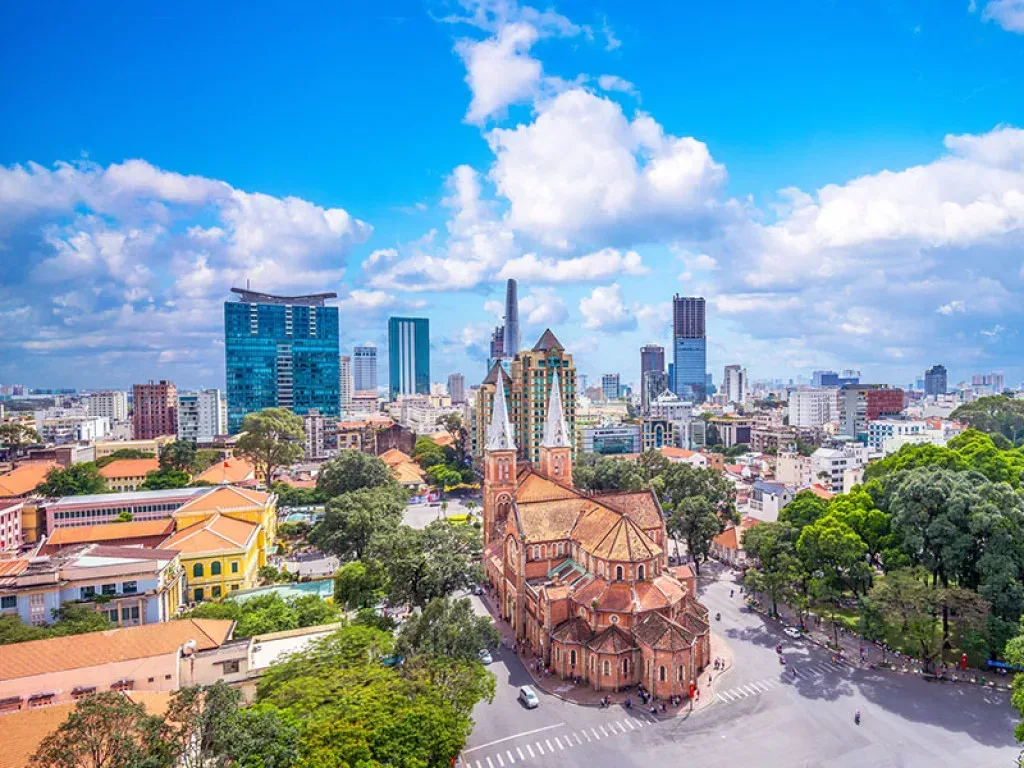
OUTLOOK RECOMMENDS
For beachside luxury in Vietnam’s historic heartland…
Four Seasons Resort Hoi An (The Nam Thai) has it all – an excellent beachfront location near UNESCO-designated Hội An, luxurious accommodation and amenities, and unrivalled customer service. You’ll be staying in spacious villas that blend modern and contemporary styles, dining on delectable Vietnamese delicacies, swimming in the infinity pool and enjoying complimentary services such as spa dates and kayak hire.
For refined Vietnamese family food in Hội An…
For cooking classes at an organic herb garden restaurant…
For landmark urban luxury…
The Caravelle Saigon is located in the centre of Ho Chi Minh, and housed in one of the city’s tallest and most modern buildings. Expect sumptuous suites with views of the city skyline, an outdoor pool and a host of cosmopolitan restaurants. You’ll be well looked after during a stay, with a concierge service providing advice and offering excursions around the city.
For Michelin-starred Mediterranean gastronomy in Ho Chi Minh City…
For Ho Chi Minh City’s most popular museum…
HO CHI MINH CITY IN FOCUS
Ho Chi Minh City is a metropolis on the move, its chaotic streets thronged with traffic. But once you become accustomed to the hustle and bustle, you’ll love exploring this fascinating, diverse city. Everywhere you go you’ll encounter contrasts: ancient Chinese temples rubbing shoulders with glitzy malls and skyscrapers; high-end restaurants around the corner from street food stalls.
The city is renowned for its scattering of ornate French colonial buildings, such as the Saigon Opera House, modelled after the Petit Palais in Paris, and the redbrick Notre Dame Cathedral. It also has a thriving Chinese community – immigrants arrived in the city in the 17th century after the fall of Ming Dynasty and established Cho Lon (or Chinatown). Browse its traditional medicine shops or enjoy a dish of char sui soup noodles at one of the hawker restaurants.
Ho Chi Minh City is bursting at the seams with cultural offerings. At the History Museum, you can learn about the city’s fascinating past, while the Fine Arts Museum houses an amazing collection of ancient and modern art, including wartime propaganda. If you want to learn more about the scars inflicted on the country by the Vietnam War, then the War Remnants Museum is a must-visit.
After a couple of days in the city, you’ll be glad of quiet spots to escape the hustle and bustle. The French-established botanical gardens provide an oasis of calm with natural surroundings. Or head to the top of one of Ho Chi Minh City’s tallest skyscrapers – Bitexco Financial Tower is 856 feet high, offering spectacular panoramas. Another option is to take a cruise along the Mekong River – which bisects the city – and experience a completely different side to urban life.
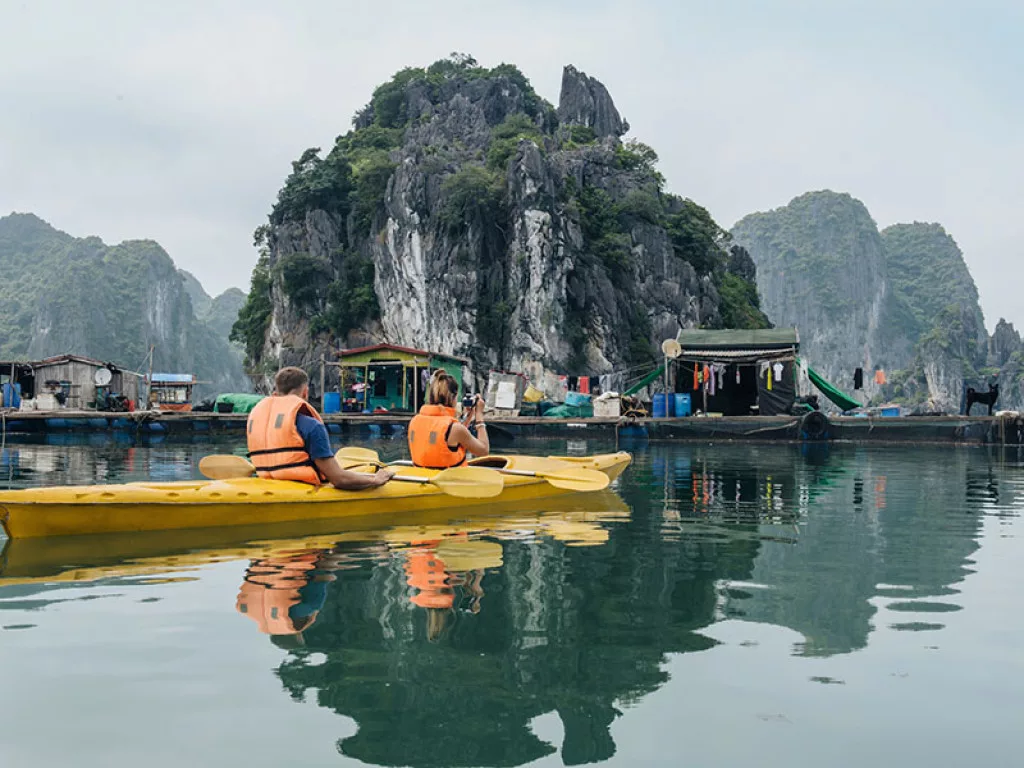
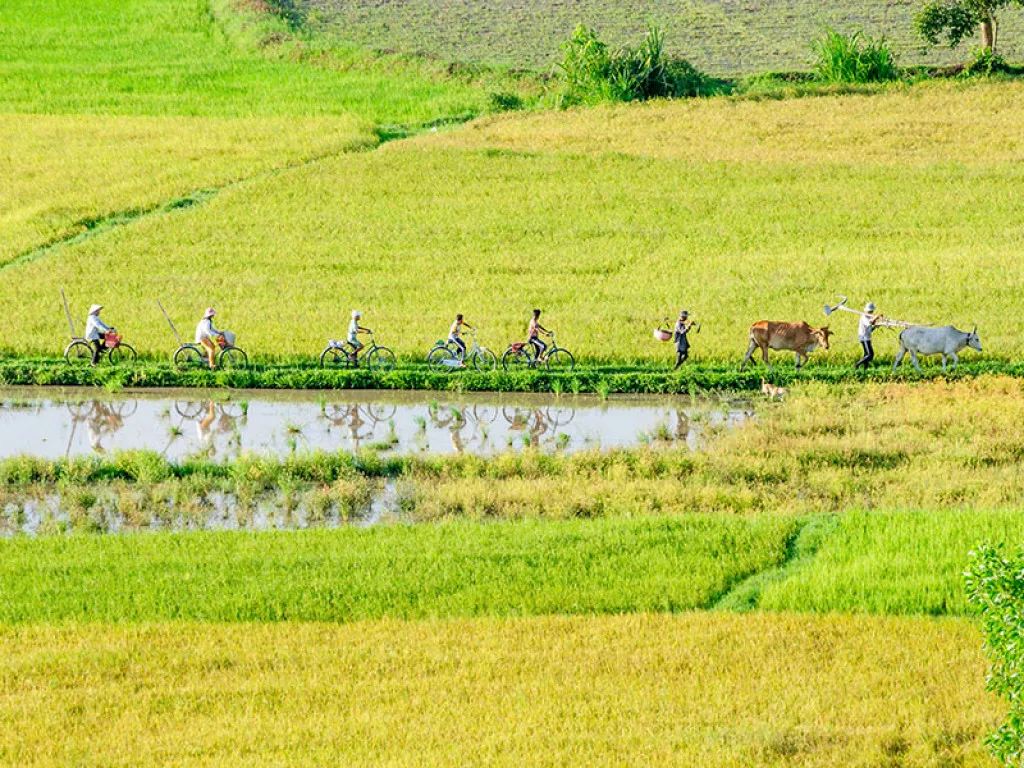
LANDMARK ATTRACTIONS
Hội An
Dreamy Hội An is riverside town of mustard yellow houses, wooden bridges and back alleys with strings of lanterns suspended across them. Cars and motorbikes are banned from the city centre, making it a chilled out place to explore on foot – and thanks to its UNESCO designation, 800 of its historic buildings have been preserved. It’s a hotspot for foodies, with a cuisine bearing traces of Japanese, Chinese and Portuguese influences. The town is also surrounded by beautiful scenery, from lush paddy fields to chilled-out beaches, making it the perfect base to explore the region.
Huế
Once the capital of imperial Vietnam, the city has lots of fascinating historical attractions. The biggest tourist draw is the Citadel, a vast complex surrounded by a deep moat and vast walls, which contains the manicured gardens, intricate pavilions, courts and temples of the Imperial City.
Phong Nha-Ke Bang National Park
This national park is another UNESCO attraction, as it houses Asia’s oldest karst mountains, which formed around 400 million years ago. It boasts spectacular cave systems and underground rivers, but the above-ground forests and mountains are also worth exploring.
GETTING THERE AND AROUND
Vietnam boasts several international airports, the busiest of which are located in Ho Chi Minh City, Hanoi and Da Nang Respectively. Ho Chi Minh City Tan Son Nhat Airport receives a staggering 40 million passengers a year.
It has non-stop destinations scheduled to 64 destinations in 23 countries across Europe, Asia, the Middle East and Australia. It also boasts 19 domestic routes, the most frequent of which is to Hanoi.
If you have limited time, it is best to travel domestically by plane. Vietnam has an excellent, affordable domestic network, with airports strategically located near most tourist hubs. Small regional airports are occasionally delayed – Vietnam Airlines is one of the most reliable carriers. Other ways of getting in between cities include private buses and trains – an air-conditioned sleeper berth can be one of the more comfortable ways to travel long distance.
It is also possible to travel by boat, especially around the Mekong Delta and its tributaries, as well as to access Vietnam’s islands. Hiring a car and a driver, or one’s own motorbike, is also popular with tourists; it allows maximum flexibility to visit Vietnam’s most remote regions, and is very affordable. However, if you plan on driving, make sure to be careful on some of the more winding mountain roads!


